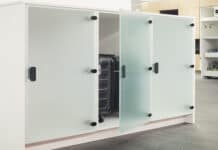Now that many facilities around the country are reopening, building owners and managers are considering having risk assessments performed.During the pandemic, a risk assessment often focused on protecting building user health. Now, with crime increasing in many parts of the U.S., facilities are having risk assessments conducted for their original purpose: To evaluate a facility’s defenses against external and internal security risks and threats.

“A risk assessment is an in-depth security evaluation,” says Jonathan Tal, CEO of TAL Global, which has been conducting risk assessments for schools, corporate campuses, medical facilities, and sports venues — including the site of the 2022 Super Bowl — for more than 20 years. “However, risk assessments have many benefits – benefits that are needed more now than in years past.”
According to Tal, among those benefits of a risk assessment are the following:
- Identify and list an organization’s security weaknesses and vulnerabilities.
- Bring “fresh eyes” into the facility. Often, building users and managers overlook or are not aware of pronounced weaknesses in their facilities.
- Identify what facility security systems are in place now.
- Make smart security purchasing decisions based on risk assessment. No two facilities are the same. The security systems installed in one facility may not be applicable to another.
- Validate for facility managers why specific security measures are needed.
- Justify the spending for new security measures. Frequently the financial risks of not having a risk assessment conducted outweigh the costs.
- Provide security training programs designed for building users, instructing them what to do — and not do — should an emergency or threat occur.
- Develop a communication and decision-making system to use should a threat occur. In an emergency, every second counts. The risk assessment instructs building owners and managers what to do and what steps to take should an emergency occur.
- “Finally, a properly conducted risk assessment can even boost worker productivity,” adds Tal. “When people feel safe in their surroundings, they feel valued and appreciated. This often translates into enhanced worker productivity.”




















![[VIDEO] Collect Asset Data at the Speed of Walking a Building](https://facilityexecutive.com/wp-content/uploads/2024/02/maxresdefault-324x160.jpg)